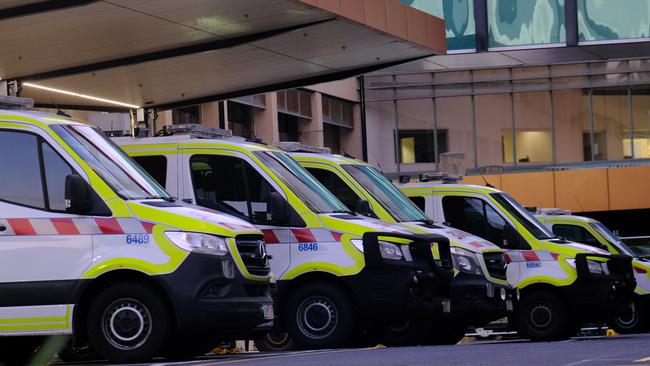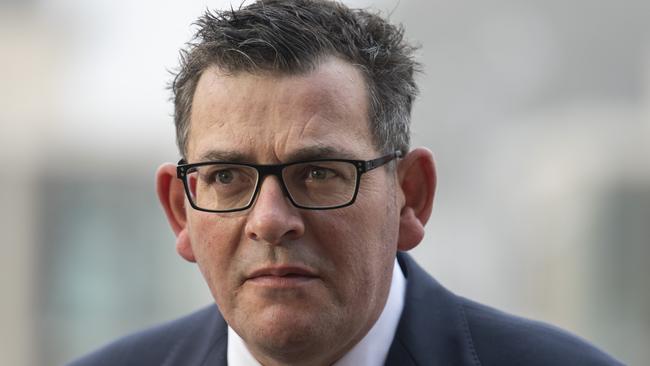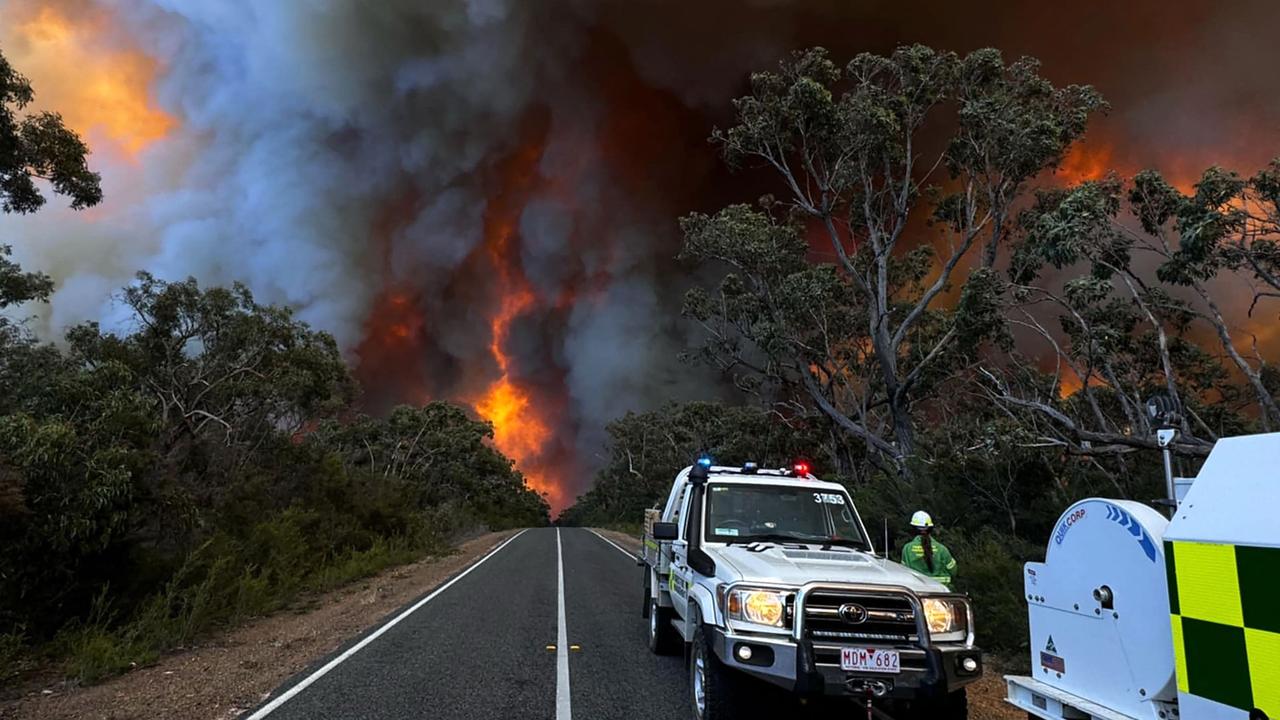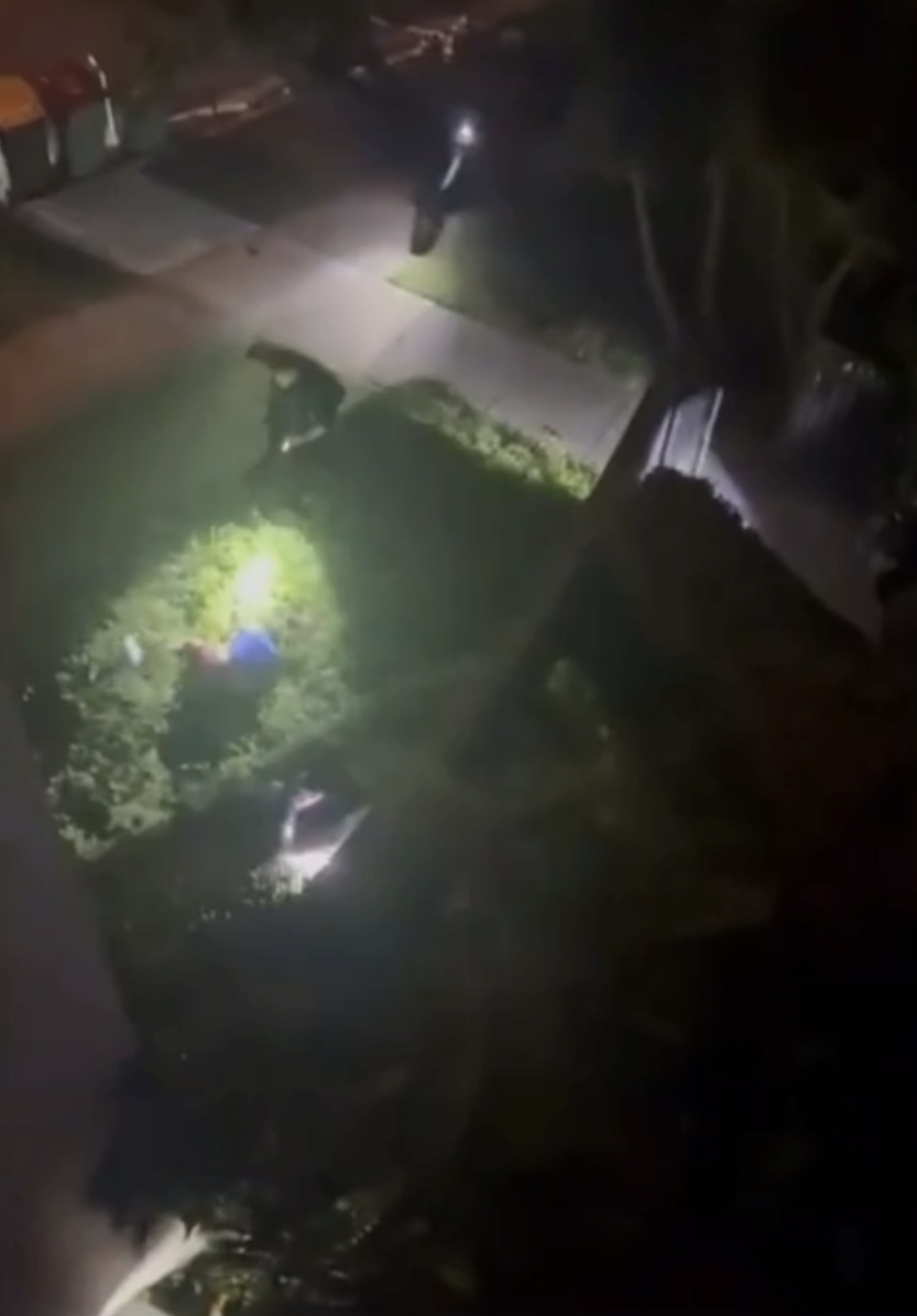Research reveals Victoria’s ramping crisis existed before Covid
Dan Andrews continues to claim the pandemic is mostly to blame for Victoria’s ambulance ramping crisis despite a new study proving otherwise.
Emergency Services
Don't miss out on the headlines from Emergency Services. Followed categories will be added to My News.
Daniel Andrews has attempted to downplay damning expert evidence over Victoria’s ambulance ramping crisis that contradicts his repeated claims the pandemic is mostly to blame.
As revealed by the Herald Sun on Thursday, the alarming study shows that ramping – when paramedics are forced to keep caring for patients while stuck in hospital carparks due to bed shortages – may have been associated with 70 preventable deaths in chest-pain patients during 2018 alone.
The damning research, published in the Medical Journal of Australia, analysed more than 200,000 people taken to Victorian hospitals via ambulance for non-traumatic chest pain from January 2015 to June 30 2019.
It debunks the government’s claim that much of the crisis is related to Covid sickness and absenteeism.
Despite the findings, in a statement on Wednesday night, the government again tried to blame “an unprecedented amount of pressure” due to Covid and a spike in influenza cases.
The research found that once patients were ramped for 17 or more minutes, their chance of dying within the next 30 days increased.
They were also more likely to need an ambulance again within this short time frame.

While the Premier acknowledged the health system had never been perfect, he said the current ambulance crisis was a “direct result” of the pandemic.
“There’s always pressure in our health system. At no point have I stood up and said that our health system is perfect,” he said.
“It’s under enormous stress and strain at the moment and that is a direct result of the pandemic.
“Anyone who suggests that is somehow inaccurate, or a self-serving narrative, I’d ask you to question their motives because I think they’re all about the politics.
“To use challenges in the health system at another time to somehow try and craft a narrative that any suggestion that the pandemic has put extreme pressure on isn’t accurate. That is absolutely wrong. The pandemic is real.”

Australasian College for Emergency Medicine president Clare Skinner said the only real solutions to ambulance ramping and emergency department overcrowding were to address “systemic issues” by increasing capacity and improving patient flow out of EDs and into hospital wards.
“Just as pain is a symptom of a broken bone, ambulance ramping is a symptom of a lack of capacity and integration in the health system,” Dr Skinner said.
“We don’t treat the pain and ignore the broken bone. And to cure ambulance ramping, we don’t treat the symptom, we need to cure the system-wide problem.
“All acute healthcare workers, including paramedics, nurses, and emergency doctors, share the same desire to provide the best care to all patients. And we are facing the same systemic obstructions that prevent us from providing the care we all desperately want to give to people in need.”
Ambulance Victoria acting chief operations officer Anthony Carlyon said the research provided evidence “that we need to do more”.
“The whole system needs to work,” he said. “It needs to work right from the point of our attendance at a patient to the time that we get to an emergency department and right through to a patient being discharged.”
It comes after senior minister Ben Carroll attempted to partially blame Victorians for the ambulance crisis, saying it was up to them to only call triple-0 in emergency situations.
His comments came just a day after Melbourne’s health system hit crisis point with an ambulance “Code Red” called due to a major shortage.
The Herald Sun reported on Tuesday that not a single ambulance was available in Melbourne in the early hours of Tuesday morning.
Mr Carroll said: “We’ve always got to do more but we’re asking Victorians to be on the journey with us.” “We’re putting more paramedics on the beat but we also need Victorians to ensure they only call triple-0 for those emergencies.”
Ambulance Victoria didn’t alert the public to the Code Red, saying it was resolved quickly. But they’ve denied this was a deliberate attempt to keep the community in the dark and said they’ll consider issuing alerts in all future cases.
Monash University’s Associate Professor Dion Stub, cardiology adviser to Ambulance Victoria, co-authored the research and called for urgent reform. “Essentially the longer you’re ramped, the greater your risk of mortality and higher risk of readmission (in the following 30 days),” he said. “After 17 minutes, and then for each 10 to 15-minute increment, there was an increase.”
He called for new ramping targets below the 40-minute mark. “Our data would suggest that 40 minutes is likely too generous,” he said.
“In the United Kingdom, it’s 15 minutes. Our targets for what we consider a reasonable offload time should be less than 40 minutes.
“Unfortunately, we have a significant proportion of patients who are having significant delays to offload.
“We need to urgently tackle the issue with ramping, which is a significantly worse problem with the impact of Covid.”
In further evidence ramping was increasing pre-pandemic, the study found the median off-load time increased from 21 minutes in 2015 to 24 minutes by the first half of 2019.
“Ramping … has been escalating even before Covid hit,” he said. “Year on year it was getting worse.”
The data showed spikes each year in the ramping time as winter struck, between July and October.
The study involved researchers from Ambulance Victoria, Monash University, Royal Melbourne Hospital, Alfred Health and the Baker Heart Research Institute. A government spokesman said it had invested more than $12bn to get the health system “back on track” since Covid.
An Ambulance Victoria spokeswoman said they were implementing strategies to relieve pressure in the system.
“(That includes) introducing rapid offload escalation measures, patient offload teams and increasing resources on the road and within our secondary triage service,” she said.
Responding to Mr Carroll, prominent Werribee GP Joe Garra said it was unfair to “blame” patients unnecessarily calling for systemic failures.
“They are two completely separate issues that aren’t linked,” he said.
“If they (the government) had enough people taking emergency calls, it wouldn’t be an issue that people are calling for a paramedic. A silly call to Triple Zero will only clog up the call service. None of that causes an ambulance to be ramped at a hospital for hours. That goes to the issue of a stressed hospital system.
“Don’t blame the population for shortfalls in the system. We should have enough flexibility to cope with community needs.”
Mr Garra said the biggest worry was that people in the community second guess their need for emergency help.
A government spokesman said: “This study assesses pre-pandemic data, including in 2019 when Ambulance Victoria recorded the best response times in the state’s history.”




